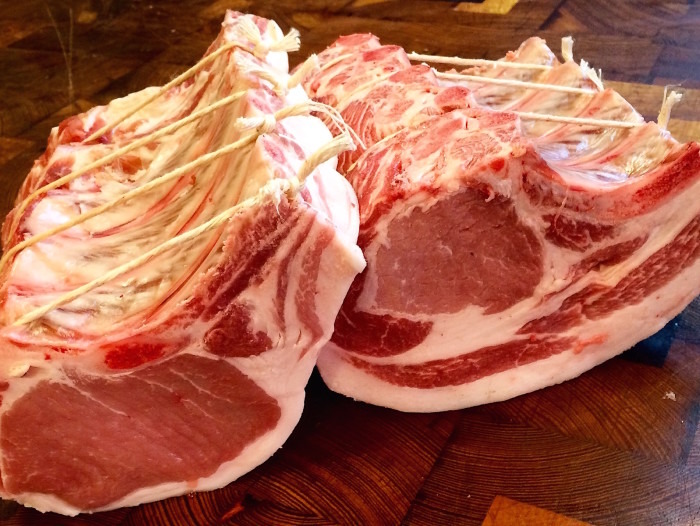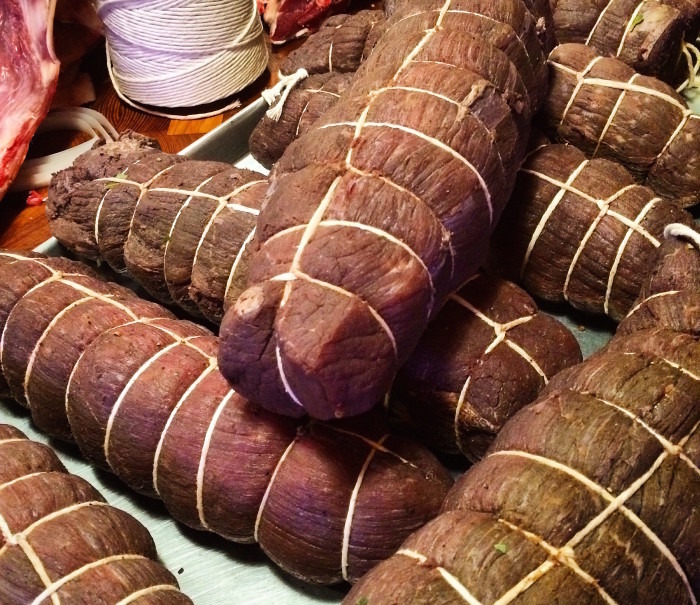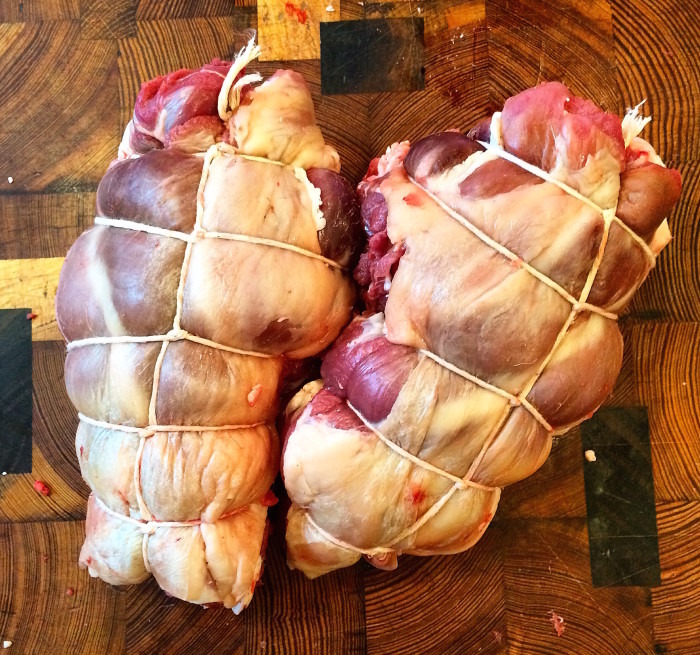Here Are The Three Best Ways To Tie A Roast
We may receive a commission on purchases made from links.
Food Republic's new column, Ask Your Butcher, seeks to answer FAQs in the world of butchery. Ethically minded butcher Bryan Mayer — former founder and co-owner of Philadelphia's Kensington Quarters, a full-service restaurant, bar, butcher shop and classroom — will tackle a pressing issue facing both meat buyers and home cooks in each column. Next up, Mayer explores the best ways to tie a roast.
It's June — what better month to talk about tying the knot? Relax, commitment-phobes, I'm not talking about that kind of knot. I'm talking about the one you tie around roasts. For this one, all you need is a good hunk of meat, some twine and a bit of dexterity with your fingers. Let's tie some meat.
Tying roasts is kind of like learning how to ride a bike. You'll fumble around for a while, get frustrated, threaten to quit and then...you've got it! Sure, you may never be able to tie an emperor's hat or a compound double coin, but you're probably never going to master a cliffhanger or 360-tailwhip either. That doesn't make either any less satisfying.
There are hundreds of knots, and some are easier to master than others. But there are a few basic ones that are the building blocks of knot tying. The square and half-knot, half-hitch, slipknot and noose, along with a few others, illustrate the fundamentals of knot-tying. They either form the components of other knots or are the underlying structure. The names can also be confusing, as some of them are used interchangeably (for example, the slipknot and the noose). A butcher's knot is more a noose than a slipknot, in that it tightens under load and a slipknot doesn't. Yes, I geek out on these things. The three knots demonstrated below — the butcher's knot, the Hans knot, and the continuous knot — incorporate methods from some basic knots. Learn these three and you'll be on your way to becoming a roast-tying master.

Why even bother tying a roast? For starters, it keeps things uniform, especially if your roast has a bone in it. Tying — or "trussing" — will lessen the surface area of your roast, which increases cook time a little because the center is now closer to the inside. Tying the roast, however, will allow for more exposure of the entire piece of meat and less contact with the cooking surface. As a result, you'll want to keep the cooking temperature lower so you'll wind up with a roast that has an allover crisp exterior and a beautifully rare middle, just the way it should be.
If you plan on stuffing something like a pork chop or a butterflied leg of goat, tying becomes even more necessary. You don't want that delicious stuffing to fall out. Tying also allows you to add flavor even without stuffing. Try sliding sprigs of rosemary, thyme and other herbs in between the knots. And for those of you who can't stand the thought of eating anything that had bones, try trying the bones back on if you're cooking something like a rib roast. Once it's cooked, simply undo the string and remove the bones. For all you omnivores out there who haven't quite come to terms with eating animals, you'll get all the flavor of cooking on the bone without the thought of eating an animal. Hopefully you'll still use the bones to make stock.
Finally, we can't talk about tying roasts without talking about string. There's a pretty simple rule to follow: Use cotton or linen only! Cotton is usually the cheapest and most common material, but my chef friends seem to prefer linen for its ability to hold knots better and pull away from cooked meat more easily. Stay away from nylons and poly blends, as there is a chance they can melt or leach toxins into your food. The same goes for fancy colored string — save that for your box of cannolis. Lastly, if you're in a pinch and don't have any string around, you can always use unwaxed dental floss. You do floss, right?
Let's tie some roasts!
The Butcher’s Knot
There are multiple iterations of this knot, but it all gets you to the same point: a nice uniform roast. I tend not to use this method or teach it to new butchers, as I find it more difficult and it requires a bit more hand movement. You'll also need to put down your knife for this one, unlike the Hans knot, where you can hold on to your knife and spin it around like Tommy Lee at the drum set.
The Hans Knot

I'm not really sure what this knot is called (please feel free to let me know if you do), so I call it the Hans knot for no better reason than Hans — one of my mentors — showed it to me years ago, and that's the knot I now tie. It's simple and efficient. And as I mentioned above, you can hold on to your knife while tying it. That might not seem like a big deal, but every second counts when you've got holiday orders of 50 standing rib roasts to tie. I guess the one caveat to this method is to be prepared to get some world-class calluses on those pinkies.
The Continuous Knot

This takes your knot-tying to the next level. Here, you begin with a butcher's knot and then half-hitch it all the way down the roast. It's something you see more of in the charcuterie world, keeping all those forced meats nice and tight in their casings over long periods of time while they hang. For roasting purposes, it's just a bit of added security, especially when you're tying something less uniform in shape, like a deboned shoulder as opposed to an eye of round.
Ready for a couple of hot tips? You're going to need to practice this a few times, so don't waste a perfectly good roast. Get yourself a towel, roll it up and you've got yourself a stunt roast. Trying to keep that spool from rolling onto the floor? Grab yourself a small bowl or container. Your spool stays put and you can focus on your knife spinning.
One other thing that I should mention is that if you haven't noticed from the videos, I'm a lefty. So just reverse everything I did...that should be no problem.
Want to go down a rabbit hole of knot-tying? Check out this comprehensive guidebook: The Ashley Book of Knots.

